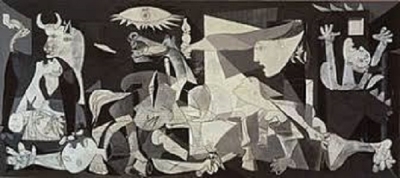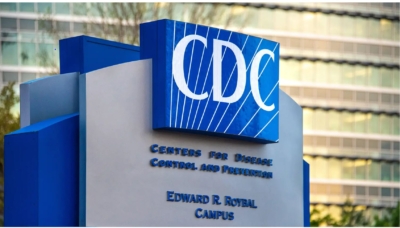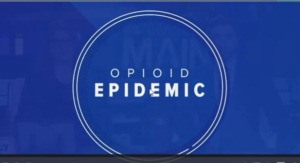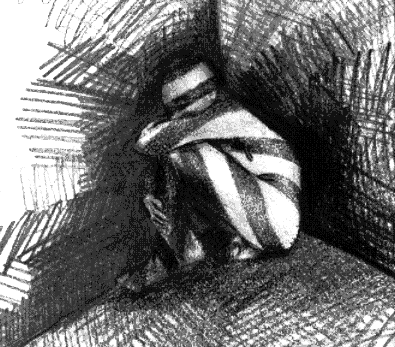
“All legislation represents the morality of a society and until we as a society recognize that we cannot legislate morality, the so called “Drug War” will continue to decimate our most vulnerable.”
~ Tim Cheney
In the 60’s, Sociologist Howard Becker, coined the term Moral Entrepreneur, which refers to an individual, group or formal organization that seeks to influence a group to adopt or maintain a norm. Moral entrepreneurs are those who take the lead in defining and labeling a particular behavior and popularizing this label throughout society. He goes on to identify and define the characteristics and the roles of two groups- Rule Creators and Rule Enforcers- in terms of the sociology of social control. Rule Creators, characteristically, members of the economically privileged classes, express the conviction that some kind of threatening social behavior or ideology (evil-morally repugnant) exists that must be eliminated. Rule Enforcers (criminal justice system) serve to enforce and legitimize the rules. The creation and application of explicit rules are seen as characteristics of moralism, which has the tendency to treat people whose behavior or ideology is outside the boundaries as enemies and the end result is the creation of a deviant subculture which becomes self-perpetuating. This theory of social control provides a clear framework in understanding the origin and impact of the drug war, aka moral crusade, and exposes the political and economic motivations of the benefactors (Rule Creators) of the current drug policies.
Gone to graveyards, everyone
Oh, when will they ever learn?
During the last 4 months of 2014, the media engaged the world’s limbic system with a new bugaboo, the threat of an Ebola epidemic. This was fertile fodder for the media as there is no cure and no vaccine and therefore no story expiration date. America stood by mesmerized by the horror of a third world hemorrhagic fever coming to this country and wiping out tens of thousands of lives. This sensationalism reminiscent of the anthrax incidents following 911 generated a wave of irrational fear that rocked financial markets causing more collateral damage than the disease could itself.
But an epidemic has been raging for the past 18 years, claiming hundreds of thousands of lives directly and indirectly and yet we as a global community have made few inroads towards a solution. This is not to say that the Drug War and the current opioid epidemic have not garnered significant media coverage over the past years, however if one discards the political hyperbole intended to pacify the masses and carefully examines the drug policy and funding priorities, the economic, healthcare and the societal ramifications remain relatively constant. Addiction and substance use disorder, whether it be treatment, incarceration or medication intervention is incredibly profitable. Are we addicted to the Greek drama of addiction? Is there too much money at stake to move the cheese and reduce the profit margins? Are we so arrogant as a nation that we cannot learn from the lessons of history and the successes of other countries? The answer is regrettably, yes. As Thomas Jefferson once said, “Money, not morality, is the principle commerce of civilized nations”. This drug war and the current epidemic have spawned a new economy where individual big Pharma players are generating more EBIT annually than the Mexican Spinola Cartel, treatment conglomerates are now traded publically, prisons are outsourced and a urinalysis panels have been known to be billed for up to $1,500. The list of malfeasance goes on ad infinitum. Substance abuse disorder, unlike Ebola, has become a sustainable commodity and human life and suffering have become merely collateral damage. However, Ebola, for that moment, was a good distraction. When we develop the Ebola vaccine then we can chalk one up for the good guys. Hey wait, didn’t Scripps develop a vaccine for Heroin several years ago?
I have always believed that most situations we perceive as insurmountable problems are in fact perceptual problems in which we have constructed a story, woven a myth to support our perception of the issue and ultimately gives us an out and, that in most cases, a critical reexamination will yield different approaches and potential alternative beneficial solutions. I use the greatest good for the greatest number as my yardstick and agree to accept that 80% is a reasonable goal. There are no magic bullets. And finally, I understand that there is not a conventional solution to every problem and therefore acceptance of such fact is the solution to said problem. I see the philosophical underpinnings of the drug war and the hyper vigilant response to the so called substance use disorder in this light. I do believe that Albert Einstein was spot on when he stated “We can’t solve problems by using the same kind of thinking we used when we created them”. We have been using the same thinking for over 50 years and the results are horrific. Our ideological crusade perhaps will be recorded in American history as the most ill-conceived, illogical, destructive assault on the American citizenry since slavery.
I grew up during an era when body counts from the Vietnam War were routinely reported on the nightly news. Our government and military deployed troops and military resources based upon the size and threat of the enemy to prevent loss of life. Tactically and strategically this makes sense. Over the past several years, to witness the government, the CDC and the WHO respond with a level of urgency and efficiency to a potential healthcare crisis that, at the moment, measured by mortality incidence is insignificant when compared to the mortality rate of addiction worldwide and its blood borne counterpart diseases – HIV & Hepatitis C, is incomprehensible. What is particularly disconcerting being that an addiction epidemic has been ravaging the United States for the last decade claiming 72,000 lives from opioid overdoses last year alone and globally between 350,000 – 500,000 lives from Hepatitis C and 1.5 million from HIV annually. Our prisons and jails house 25% of the world’s prison population of which 65% meet the diagnostic criteria of substance use disorder and another 20% for drug related crimes. To intensify the crisis, our current healthcare system is plagued by parity issues and accommodates only the middle and upper classes who have the financial means to access treatment. The private addiction treatment sector has evolved into a 50-billion-dollar industry with a very poor track record due to its reliance on abstinence based ideology for the treatment of opioid use disorder. Economically motivated Treatment Gurus tout evidence based practices yet the industry has yet to adopt a universal lexicon and is in its infancy developing and implementing aftercare care monitoring that would yield metrics on the efficacy of treatment types. An acute care model will never address the needs of a chronic disorder. It appears that this epiphany is finally taking hold.
Our inner city addicts, the majority of which are black or Hispanic, are merely disposable lives that fill beds in outsourced prisons owned and managed by publicly traded companies. Gabor Mate, an internationally renowned author and speaker on addiction and trauma, provided the following summation of the alleged Drug War –
“There is no war on drugs…there is only war on drug addicts… the most abused and vulnerable segments of society.”
As society’s “throwaways”, this practice serves as a financially viable alternative that generates multiple revenue streams from recidivism in treatment, incarceration and pharma. The more” heads in beds” the more revenue. Enter big Pharma, a capital offender, with a mind boggling menu of psychotropic medications that is too extensive to list. The drug-disorder life cycle appears to follow this pattern: create a drug, create a disorder, elevate the awareness of the alleged disorder and saturate the market with the pharmacological agent for the treatment of said disorder. When the market for the particular substance is saturated, it is then common practice either to expand or change the symptom sign constellation (revise the DSM) to enlarge the target market.
Over the past century since the Harrison Act was passed to generate additional government tax revenue, our drug control legislation and law enforcement policies have created a multibillion dollar black market that has resulted in gang wars that have claimed over 250,000 lives in Mexico alone. This epidemic has morphed into a pandemic that will continue to escalate less drastic reform in drug policy is legislated. Lately, many progressive law enforcement officials have adopted the mantra of – “We can’t arrest our way out of the Drug War”.
From an epidemiological standpoint, both addiction and substance use disorder are environmentally communicable. Current medical science has proven through empirical neurobiological research that not only is addiction a chronic brain disease but also often genetically predisposed. Recently, several prominent neuroscientists and addiction researchers have focused on the role of epigenetics as a causal factor in addiction and substance use disorder. Current environmental stressors such as poverty, early childhood abuse, violence, education inequality, social isolation, mental illness and hopelessness are correlated with neuroadaptations that predispose and reinforce addictive behaviors. A simple explanation perhaps is that human beings are wired to avoid pain – fight or flight response- and we continue to rewire in reaction to our environmental stressors to mediate emotional, physiological and spiritual pain or dis-ease. The presence and extent of external environmental stressors in today’s society play a critical role in informed intervention, treatment and recovery. So, is it the chicken or is it the egg? One could hypothesize that much of what we define as causal factors for substance use disorder is in actuality a manifestation of a systemic societal problem rooted in generations of pseudo-Moralism and class and racial inequality which have been perpetuated by predatory economic interests that determine criminal justice and healthcare policy. To address and correct this problem is to admit our complicity in creating and maintaining a socially toxic environment that encourages substance use assuming that the etiology of substance use disorder follows a multifactorial pattern. Unfortunately, current legislation and enforcement policies reinforce and promulgate the incidence and prevalence of substance use disorder by creating hostile, discriminatory external environments both in pre and post treatment phases that discourage entry into treatment and create barriers for successful reintegration to society and long term recovery.
All legislation represents the morality of a society and until we as a society recognize that we cannot legislate morality, the so called “Drug War” will continue to decimate our most vulnerable.







Leave A Comment